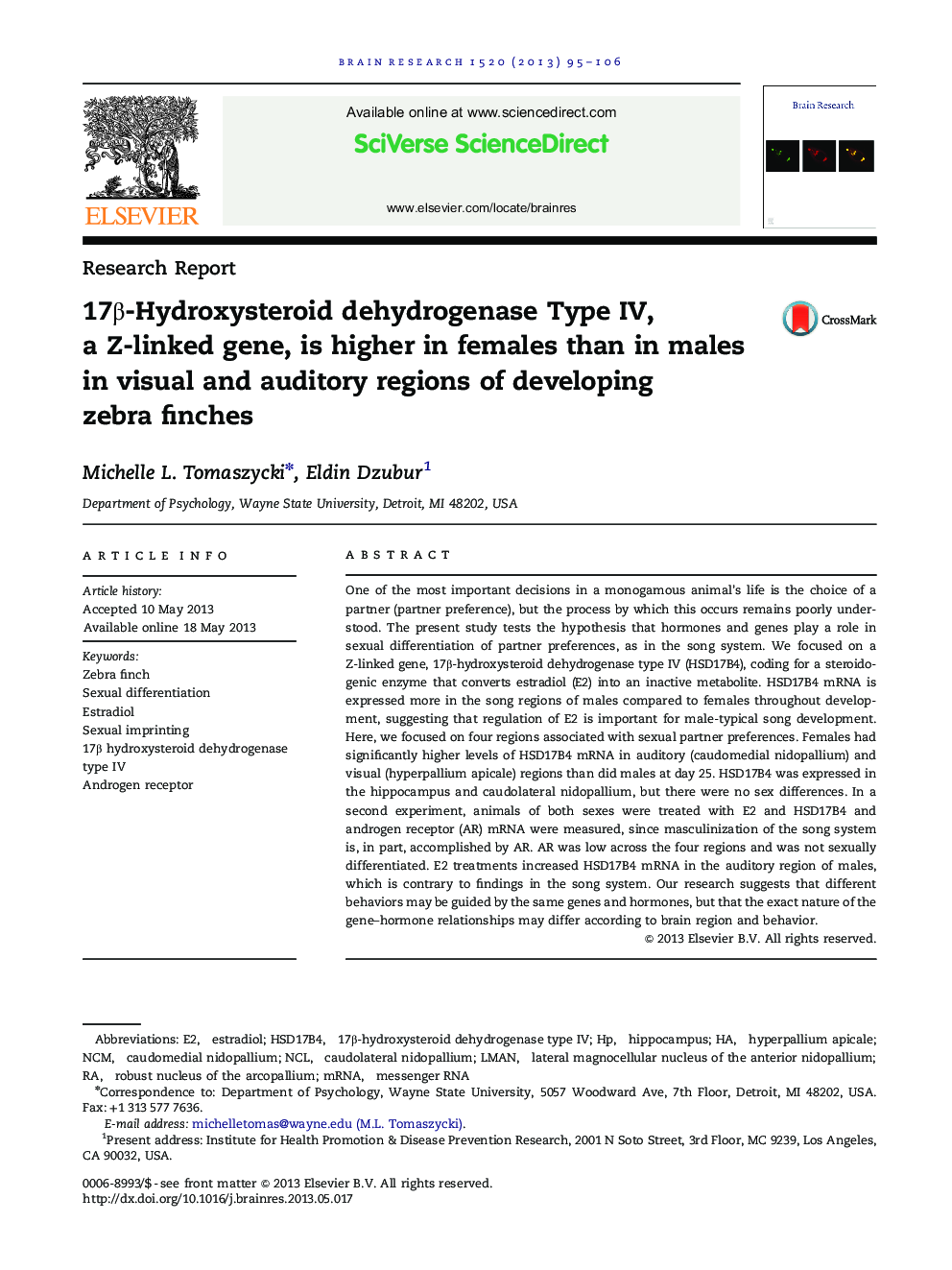| کد مقاله | کد نشریه | سال انتشار | مقاله انگلیسی | نسخه تمام متن |
|---|---|---|---|---|
| 6263814 | 1613919 | 2013 | 12 صفحه PDF | دانلود رایگان |

- HSD17B4 mRNA is higher in the NCM (auditory region) and HA (visual region) of developing females than in same-aged males.
- Estradiol treatments increase HSD17B4 mRNA in the NCM of males.
- Androgen receptor mRNA was low across sexual imprinting regions and did not differ by sex.
- Results provide evidence for a complex role of E2 and genes in the sexual differentiation of the zebra finch.
One of the most important decisions in a monogamous animal's life is the choice of a partner (partner preference), but the process by which this occurs remains poorly understood. The present study tests the hypothesis that hormones and genes play a role in sexual differentiation of partner preferences, as in the song system. We focused on a Z-linked gene, 17β-hydroxysteroid dehydrogenase type IV (HSD17B4), coding for a steroidogenic enzyme that converts estradiol (E2) into an inactive metabolite. HSD17B4 mRNA is expressed more in the song regions of males compared to females throughout development, suggesting that regulation of E2 is important for male-typical song development. Here, we focused on four regions associated with sexual partner preferences. Females had significantly higher levels of HSD17B4 mRNA in auditory (caudomedial nidopallium) and visual (hyperpallium apicale) regions than did males at day 25. HSD17B4 was expressed in the hippocampus and caudolateral nidopallium, but there were no sex differences. In a second experiment, animals of both sexes were treated with E2 and HSD17B4 and androgen receptor (AR) mRNA were measured, since masculinization of the song system is, in part, accomplished by AR. AR was low across the four regions and was not sexually differentiated. E2 treatments increased HSD17B4 mRNA in the auditory region of males, which is contrary to findings in the song system. Our research suggests that different behaviors may be guided by the same genes and hormones, but that the exact nature of the gene-hormone relationships may differ according to brain region and behavior.
Journal: Brain Research - Volume 1520, 3 July 2013, Pages 95-106